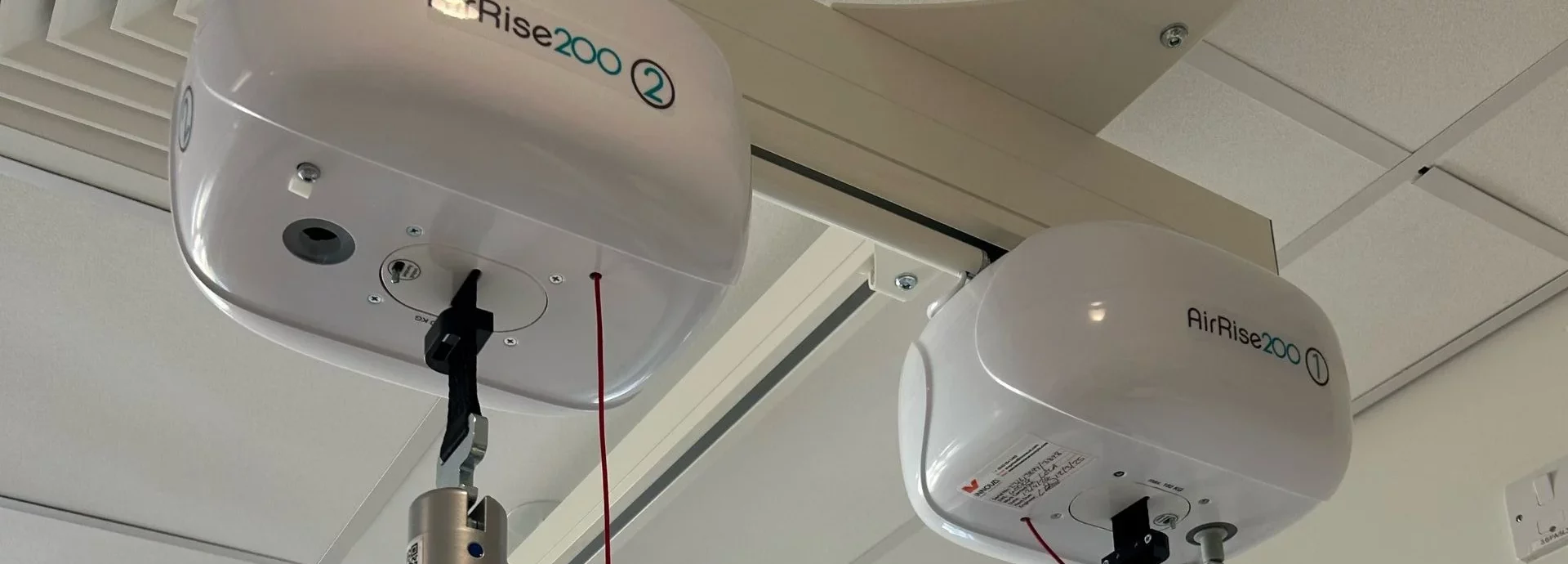There are a few different things to think about when specifying a bariatric hoisting system, and one of the most prominent things to consider is whether you need a single unit or dual unit. Each setup has its own pros and cons, but of course it depends on the weight of the user and what the hoist might be used for. We’ve investigated the benefits of single and dual units, so you can make the best judgement possible.
Single Units
Single units are individual items that sit on the hoist track and will boast a bigger weight limit for plus-sized users. Whilst there’s no official measurement to determine what weight is classed as bariatric, we generally adhere to 260kg (41 stone) and above as bariatric. Our AirRise hoist range is designed to cater to 260kg, 350kg, and 500kg. We usually recommend single units for weights between 260kg and 350kg.
One of the main benefits of a single unit system is that it is easier to operate. It’s also a bit subtler when installed because it’s just one compact hoist unit that can be tucked away when it’s not being used. As it’s a singular unit, it’s cheaper in terms of servicing and maintenance as well. If the room you’re installing the hoist in will be used predominantly by non-bariatric patients, then we’d recommend choosing a single unit.
Whilst single units are easier and smaller, they lift the entire weight load independently through a single spreader bar. This can be quite uncomfortable for larger users, as their body is squashed into a smaller surface area for hoisting.
We recommend that single units are used with 4-point cross spreader bars for greater coverage and a little more room for the person to be hoisted (although this only really applies to people up to 50 stone in weight).
Dual Units
Dual units are just 2 normal hoist units joined together that work in conjunction with one another. They are controlled by a single handset, and they often offer a bit more flexibility in terms of types of transfers and comfort.
Dual units also have their benefits. They offer a wider range of motions than a single unit does, and it lifts from a larger surface area providing a bit more comfort for plus-sized patients. As a rule of thumb, we’d usually suggest using dual unit systems for anyone above 350kg in weight.
If you’re needing a system that offers a sit to stand transfer, then dual units are what you need to be looking at. You can operate both units independently to adjust the person’s position gradually at both ends of their body.
Dual units can also provide a more comfortable transfer for bariatric users because they lift from a greater surface area. This means the person’s body isn’t as cooped up, which is of course more comfortable during lifting.
Although they can facilitate sit to stand movements, dual units are notably peskier to operate. Both units are operated by a single handset, but you need to switch off whichever unit you’re not wanting to use when setting your positioning.
Dual units can also be much bigger and more noticeable on the system, which can be unsightly. As it’s a two-unit system, the servicing costs are doubled and therefore dual units are more expensive to run.
Summary
These are the main things we think about when specifying single or dual units for bariatric ceiling hoists. It really depends on the weight of the person you’re lifting and the various things you may use the hoist for. Think about the above things carefully when you’re choosing a bariatric hoist system, and get in touch with our team if you have any questions.

